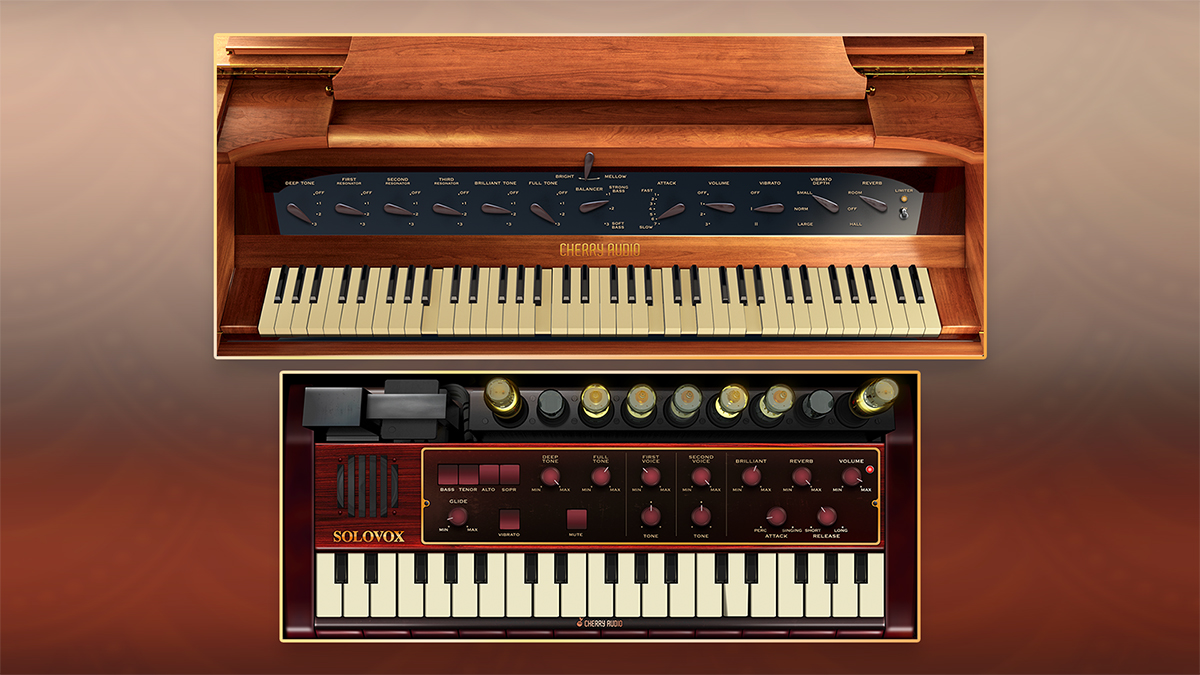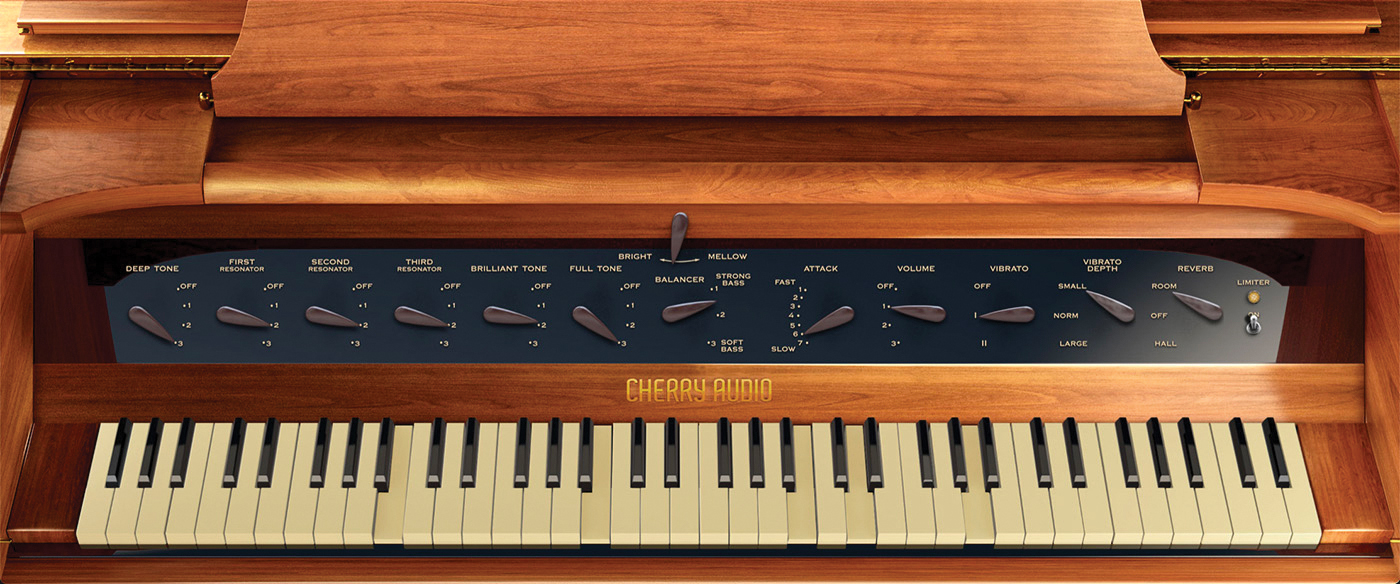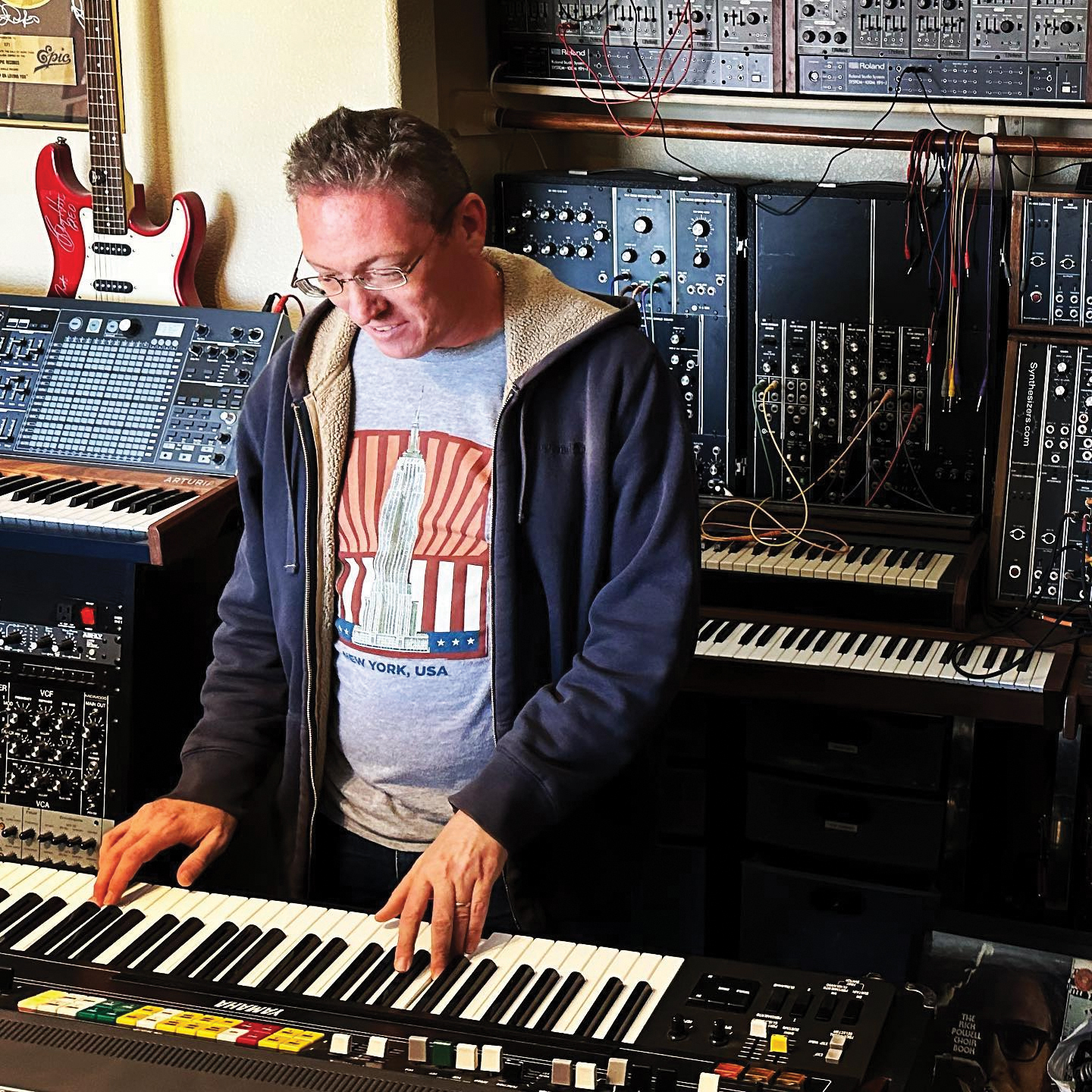How Cherry Audio recreated the sound of the world's first commercial polysynth in software: “There may be fewer than six working Novachords on the planet”
We caught up with Cherry Audio's CTO Dan Goldstein to find out more about its new plugin emulation of a super-rare proto-synth from 1939

Founded in 2018, Cherry Audio has become one of the most beloved softsynth creators, recreating yesterday’s legends virtually.
We spoke to the company's Chief Technical Officer Dan Goldstein to find out more about its latest release: Novachord + Solovox.
The Novachord + Solovox collection revives two legendary harbingers of the modern synth and brings them to the desktops of 21st century music-makers. Why did you decide to go that far back?
“If you’re the sort of person that loves the art of synthesis, and you’re obsessed with the history of synthesisers, then you simply have to be fascinated by the Novachord. It’s a fully polyphonic synthesiser with filters and envelopes that was designed nearly 20 years before the word ‘synthesiser’ even existed.
“There are some fascinating engineering achievements in the Novachord, and we loved the challenge of recreating its unique tone and character. I love that our customers never know for sure what Cherry Audio will do next, and we really enjoy occasionally exploring history’s weirder and more esoteric electronic instruments.”

What unique characteristics could these classic instruments bring to modern productions?
“The sound of the Novachord is incredibly unique, and isn’t something that can be recreated with most modern synthesisers. Every note has a unique combination of tube-driven divide-down oscillations, an adjustable brightness filter, and a primitive-but-unique envelope. The entire mix is run through a set of low-pass, band-pass, and high-pass filters (a predecessor to Moog’s fixed filter bank), and the complete mix is played through a pair of dark-sounding 85-year-old field-coil speakers which have a unique sizzle.
Get the MusicRadar Newsletter
Want all the hottest music and gear news, reviews, deals, features and more, direct to your inbox? Sign up here.
The Novachord is a polyphonic synth with filters and envelopes that was designed nearly 20 years before the word ‘synthesiser’ even existed
“The tone of the speakers and the acoustic room is a huge part of the Novachord’s sound, yet every Novachord sample library that we’ve encountered has been recorded dry through an added line output. Because the modern notion of a synthesiser was still decades away, the controls and filters of the Novachord are tailored to creating quasi-organ sounds, orchestral-ish tones, and sort‑of-piano-esque plucks.
“The Solovox is a monophonic derivation of the Novachord sound technology, but with the ability to stack octaves to create more complex tones, and be able to select between a saw-like wave and a square wave. It’s quite adept at emulating brass and woodwind sounds.
“We’ve expanded on the feature set of the Solovox a little further by making the band-pass filter frequencies adjustable, adding glide, and adding a release phase to the envelope generator, but as always we’ve been careful not to stray too far from the original design.
Whether you know it or not, you’ll have heard these sounds in countless classic movies and sci-fi television shows
“Both of these instruments offer sounds that are sometimes eerie, sometimes moody, and very occasionally cheesy, but which are dripping with vintage nostalgia and familiarity. Whether you know it or not, you’ll have heard these sounds in countless classic movies and sci-fi television shows. Both of these are definitely great choices if you’re looking for unique timbres, and when played through phasers and delays (or other wonky modulation effects), they can be transformed into something altogether otherworldly.”
Did the software modelling of these instruments provide any more (or less) of a challenge than the more recent instruments? And was it difficult to get hold of the original units that you used for the modelling?
“Solovoxes are more common, but it was nearly impossible to find a properly working Novachord! In fact, this release was delayed by many months while we reached out to our network of contacts to try to find a working example – some say that there may be fewer than six fully-working Novachords on the planet.

Cherry Audio goes back to the pre-synth age as it releases Novachord and Solovox plugins
“In the end, we located a beautifully restored Novachord in Indiana, and we worked tirelessly on our model to capture that instrument’s unique character. Mark Barton, who crafted the DSP on Novachord + Solovox, reads schematics the way most people read mystery novels, and he worked tirelessly to understand exactly how the Novachord generates its waveforms.
“The circuitry of the Novachord, built around a network of 163 vacuum tubes, and can’t help but create unique tones. Every instrument we recreate involves a ton of time-consuming modelling work, and this can be tedious and challenging, but simply put, we love and respect these instruments, and we are driven to get it right.”

Are there any other instruments of this era (or earlier) that you’d be interested in emulating digitally?
“Most early electronic instruments were not keyboard-based, and don’t really translate well to being controlled by a modern MIDI keyboard setup. For example, it would be very difficult to realistically play a virtual theremin with a modern keyboard, and it wouldn’t be much fun to play it with a mouse.
“It is possible that some MPE controllers might get us closer to the experience of playing something like a Tannerin or Ondes Martenot, but without a dedicated hardware interface, most early electronic instruments just don’t lend themselves to software emulations. Some, like the Telharmonium, were keyboard-based, but every Telharmonium recording is over 100 years old, so it is essentially impossible to really know what one sounded like. Plus it weighed 210 tons, so it’s not like we can get our hands on one.”
Earlier this year, you released the Mercury-6, an astounding Jupiter-6 emulation and one of those synths that has spanned numerous genres. You added more aspects to its original capabilities, such as per-layer stereo panning, and extended polyphony amongst other things. Is it tricky sometimes to walk the line between sticking to an accurate emulation and enhancing the instrument further?
“It’s the hardest part of the job! It can be such a temptation to look at an instrument like the Jupiter-6 with 40 years of hindsight, and want to upgrade everything about it. Wouldn’t it be better with a third oscillator, and more powerful LFOs, and a sequencer, and more filter modes, and on and on and on… But we’ve learned that it’s easy to lose everything that makes a classic synthesiser unique by going overboard.
These instruments are so much more than just the tone of the oscillators and the character of the filters
“These instruments are so much more than just the tone of the oscillators and the character of the filters. The shape and limits of the envelope generators, the patterns offered by the arpeggiators, the modulation routings and depths, all contribute to the sound and character of a classic synthesiser. Often the limitations of the instrument add just as much to the experience as the feature set does.
“With Mercury-6, we were very careful to stay true to the capabilities and character of the Jupiter-6. We did add velocity support to the envelope generators, as we often do, and we did add a couple new features to the main LFO, including the ability to sync it to tempo.
“We expanded the split capabilities by adding a layer mode (as found on the Jupiter-8), and we even added a chord mode and a few other minor changes, but by and large, none of these features take away from the character of the Jupiter-6, and they can all be turned off if these additions are unwanted.
“Even the comprehensive effects section that we’ve added can be completely bypassed, for anyone looking for the most authentic Jupiter-6 experience. But quite a lot of the unique features found in Mercury-6, such as glissando glide, stackable waveforms, multi-mode filters, solo and shared unison modes, oscillator cross modulation, and invertible envelope polarity, were all originally found on the Jupiter-6. It really was a remarkable synthesiser, and it doesn’t always get the credit it deserves because it is so often overshadowed by the Jupiter-8.”

Even though it’s a relatively new company, Cherry Audio has become very highly regarded in the soft synth world. Where would you like the company to grow next? And what do you say to those hardware purists who reject the very notion of software synthesis?
“We are working on so many exciting products, and I can’t wait until our customers can hear what we’re building! We are currently hard at work building instruments that won’t be released for six months or more, and we have all sorts of plans for products well into next year.
“Everyone has a favourite vintage synthesiser, and our customers are always letting us know what synthesisers they’d like us to tackle next. We’ve had a lot of fun creating original synthesisers, like our Sines and Dreamsynth instruments, and we have a new original synthesiser concept in development that we’re extremely excited about.
“Our customers often ask for vintage drum machine emulations, and we’ve had discussions about how to put the Cherry Audio spin on some beloved classic drum boxes. Perhaps we’ll even create our own original drum machine in the future! We’re having a lot of fun, and we’ll continue on this path as long as our customers and fans continue to support our efforts.
Everyone has a favourite vintage synthesiser, and our customers are always letting us know what synths they’d like us to tackle next
“As for the hardware purists, all I can say is that Cherry Audio’s developers and designers adore hardware as much as anyone. Between us, we’ve collected well over 250 vintage keyboards, synthesisers, drum machines, and musical oddities over the past three or four decades, and we spend way too much of our free time repairing and restoring these instruments, sourcing rare parts, and hunting down more vintage synthesisers. Our goal has always been to make these rare and wonderful instruments accessible to everybody, and we’re extremely proud of the products that we’ve built.
“Cherry Audio may be a young company, but our team has many decades of experience creating professional music software, so we’re certainly not new at this. Cherry Audio’s instruments truly are software emulations created by hardware purists, and we’ve always been our own toughest critics. I sincerely hope that the love and attention that we put into these products shines through for everyone that plays and enjoys them.”



I'm the Music-Making Editor of MusicRadar, and I am keen to explore the stories that affect all music-makers - whether they're just starting or are at an advanced level. I write, commission and edit content around the wider world of music creation, as well as penning deep-dives into the essentials of production, genre and theory. As the former editor of Computer Music, I aim to bring the same knowledge and experience that underpinned that magazine to the editorial I write, but I'm very eager to engage with new and emerging writers to cover the topics that resonate with them. My career has included editing MusicTech magazine and website, consulting on SEO/editorial practice and writing about music-making and listening for titles such as NME, Classic Pop, Audio Media International, Guitar.com and Uncut. When I'm not writing about music, I'm making it. I release tracks under the name ALP.
“Excels at unique modulated timbres, atonal drones and microtonal sequences that reinvent themselves each time you dare to touch the synth”: Soma Laboratories Lyra-4 review
e-instruments’ Slower is the laidback software instrument that could put your music on the fast track to success









